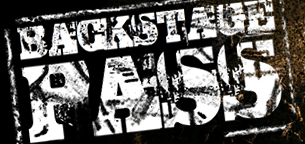Loading...
Abstract
The Heart Sutra is one of the most recited texts in the Mahayana Budddhist tradition. Traditionally, it is chanted rhythmically on a single pitch with a wooden drum. This setting of the Heart Sutra instead expresses the text through harmony and text painting.
The piece opens with a Hindustani-style invocation, referencing Buddhism’s Indian roots. Following that, a solo alto recounts a story of the Bodhisattva Avalokiteshvara before all voices deliver his Insight, addressed to his disciple Shariputra.
In the first movement, lush harmonies are contrasted with open fifths, which represent “Shunyata,” or emptiness. This portion of the text discusses the nature of “Rupam,” either translated as “form” or “Body” and “Shunyata.” The Bodhisattva Avalokiteshvara explains that these two concepts, while seemingly contradictory, are one and the same. To illustrate this point, both words are interpolated at the end of the movement.
In the second movement, Avalokiteshvara further elaborates on the nature of emptiness. To reflect this, the movement starts with the lower voices singing a biphonic line, which consistently returns to an open fifth. More voices gradually fill out the harmony, with the climax of the piece at the end, describing perfect Nirvana.
The third and final movement sees a return of many themes throughout the piece, beginning with the alto solo theme, which has been expanded into an alto duet. The latter half of the piece consists of only the mantra “Gate, Gate, Paragate, Parasamgate, Bodhi, Svaha!” This mantra is adapted to many of the themes heard in the first two movements, showing a progression “towards the other shore.” The piece ends on a CMaj13#11 chord, mirroring the one heard at the end of the first movement, and representing the ascension toward Enlightenment.
The text of this piece is in Sanskrit, which is not is not an easy language to write for, as the length of vowels is very important in the language. As such, I was careful to observe the rules of the language. Composing this piece helped me connect myself to my Buddhist upbringing, and through this work, I was also able to better understand a text that has vexed many practitioners. I hope that this work resonates with you in some way as it did when I was writing it!
Recommended Citation
Bùi, Brian
(2021)
"The Heart Sutra,"
Backstage Pass: Vol. 4:
Iss.
1, Article 7.
Available at:
https://scholarlycommons.pacific.edu/backstage-pass/vol4/iss1/7



Author Bio
Brian Bùi is a composer living in Stockton, California. As a first-generation Vietnamese-American, his music explores not only his cultural roots, but also his experiences growing in America, and draws influence from a wide range of genres such as jazz, classical, Latin, and most notably, Vietnamese traditional music. In addition to playing the piano, Brian also plays the đàn tranh, or Vietnamese 17-string zither. Under the instruction of đàn tranh master Vanessa Võ, Brian has played at venues such as the Yerba Buena Gardens Festival in San Francisco and even the U.S. Embassy in Hanoi. Brian has recently graduated University of the Pacific with a Bachelor's of Music in Composition.